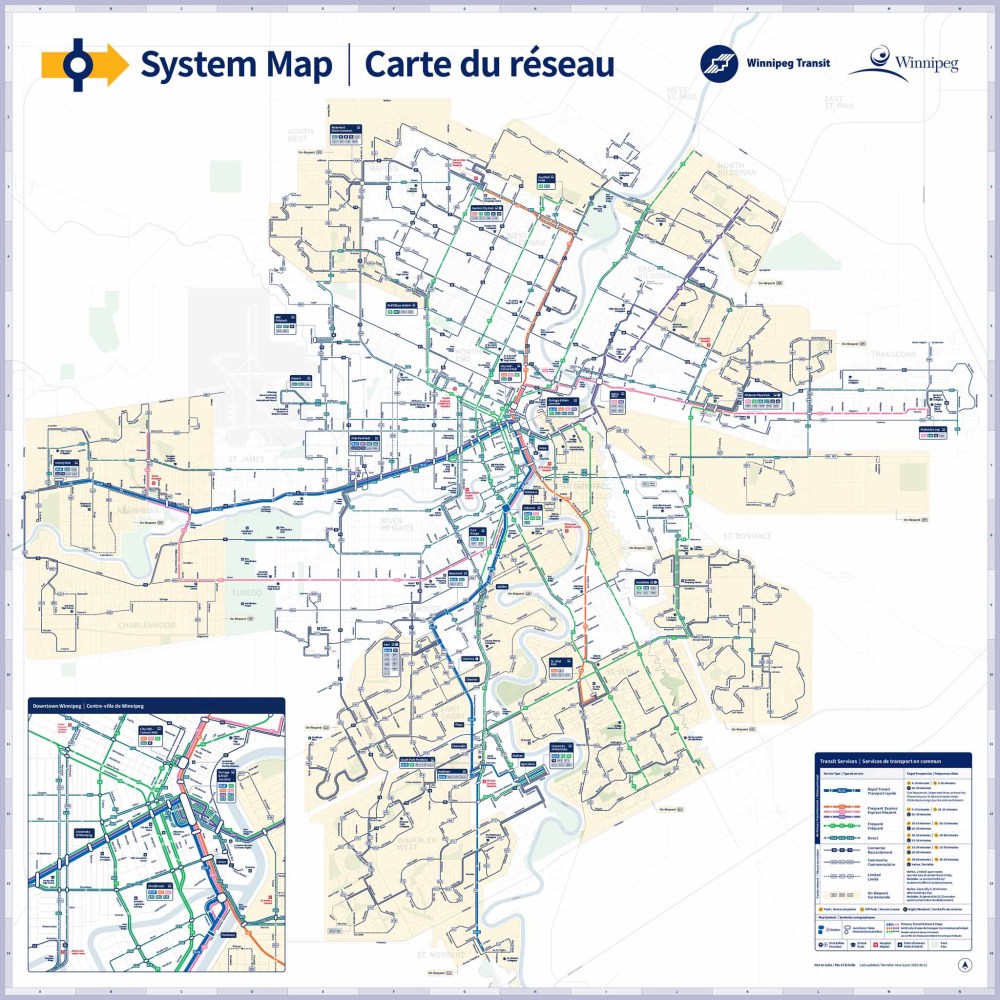Winnipeg’s transit system has changed. Here’s your survival guide.
Read this article for free:
or
Already have an account? Log in here »
To continue reading, please subscribe:
Monthly Digital Subscription
$0 for the first 4 weeks*
- Enjoy unlimited reading on winnipegfreepress.com
- Read the E-Edition, our digital replica newspaper
- Access News Break, our award-winning app
- Play interactive puzzles
*No charge for 4 weeks then price increases to the regular rate of $19.00 plus GST every four weeks. Offer available to new and qualified returning subscribers only. Cancel any time.
Monthly Digital Subscription
$4.75/week*
- Enjoy unlimited reading on winnipegfreepress.com
- Read the E-Edition, our digital replica newspaper
- Access News Break, our award-winning app
- Play interactive puzzles
*Billed as $19 plus GST every four weeks. Cancel any time.
To continue reading, please subscribe:
Add Free Press access to your Brandon Sun subscription for only an additional
$1 for the first 4 weeks*
*Your next subscription payment will increase by $1.00 and you will be charged $16.99 plus GST for four weeks. After four weeks, your payment will increase to $23.99 plus GST every four weeks.
Read unlimited articles for free today:
or
Already have an account? Log in here »
Winnipeg Transit’s bus network underwent a complete transformation on June 29.
The network switched from a hub-and-spoke system — where buses travel between downtown and outlying neighbourhoods — to a spine-and-feeder concept, where frequently serviced spines along major corridors are supported by a network of feeder routes.
As virtually every route in the city has changed, the Free Press has created a survival guide to help you navigate the new system.
Why are routes changing?
City officials say the spine-and-feeder concept allows buses to arrive more frequently, travel more directly and provide an overall more reliable Transit service, in part because most feeder buses don’t have to navigate downtown traffic.
Under the new network, a bus is expected to arrive every five to 15 minutes along each of the most frequent routes during peak periods, while connector route buses would come every 15 to 30 minutes.
More transfers are required and community routes end earlier in the evening.
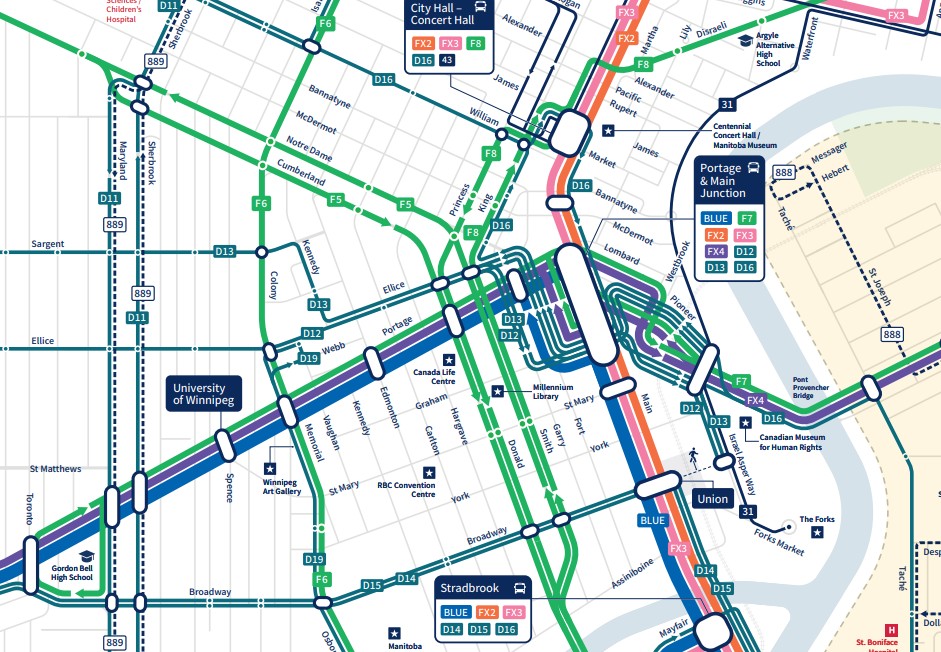
When will routes change?
Winnipeg Transit launched its new routes on Sunday, June 29.
Seven or eight “travel trainers” and 30 other Transit staff are posted along main routes and stops to help travellers find their way.
Will my bus stop change?
It is possible one of the bus stops you usually use has been moved, replaced or removed.
Under the new system, the total number of bus stops will be reduced to 4,000 from 5,200.
Over the last few weeks, signage has appeared showing new route information at existing stops, and providing information on stops that are being removed or moved.
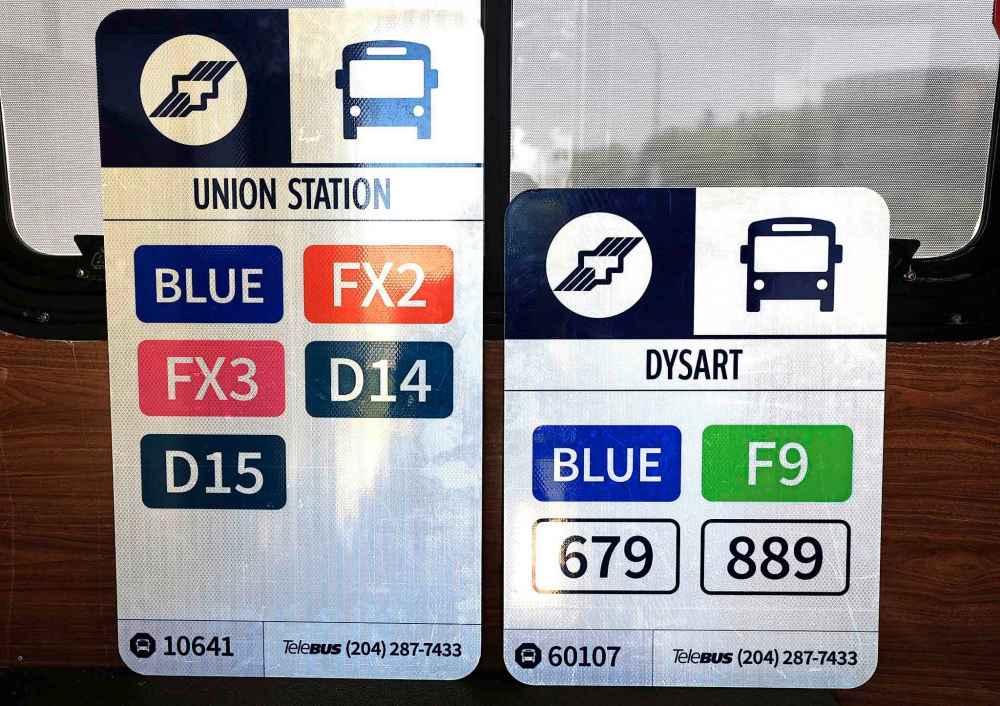
How do I get where I need to go?
Bus riders can plan routes they’ll need to take in the new network using Transit’s trip-planning website, Navigo.
Navigo lets you choose your starting point, your destination, and the time you wish to leave or arrive by. The site will generate a selection travel plans.

The Navigo website can also help you locate stops and their respective schedules and specific routes.
Winnipeg Transit’s website also offers:
- A full system map (PDF, 2.7 MB)
- Individual route maps with turn-by-turn descriptions (PDF, 6.8 MB)
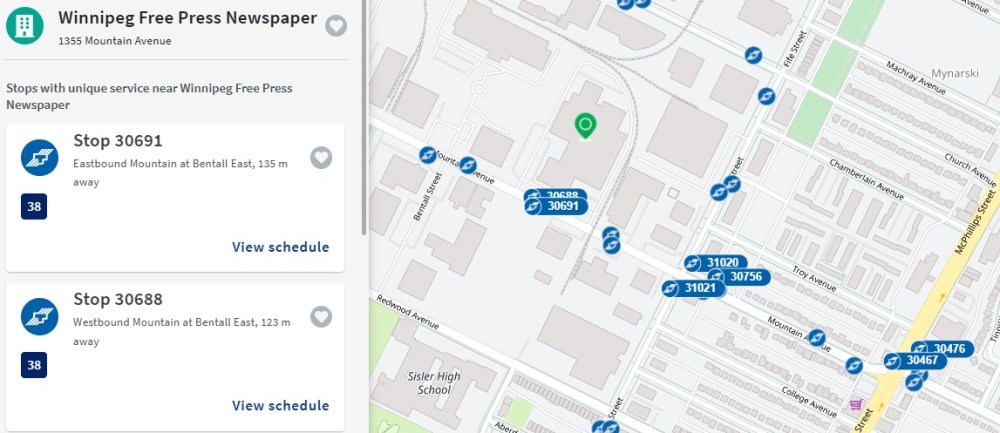
Riders can also use the Winnipeg Transit app or the Transit app. Winnipeg Transit has partnered with the Transit app for one year. The Transit app uses a different algorithm for planning trips and may suggest different routes than Navigo.
Both apps allow users to plan an immediate or future trip.
The Winnipeg Transit app also lets you find stops and schedules, explore routes and “go live” using an “On the Go” feature to follow the route you are riding on.
Printed route maps are also available at Transit customer service centres. Riders can also call 311 for assistance.
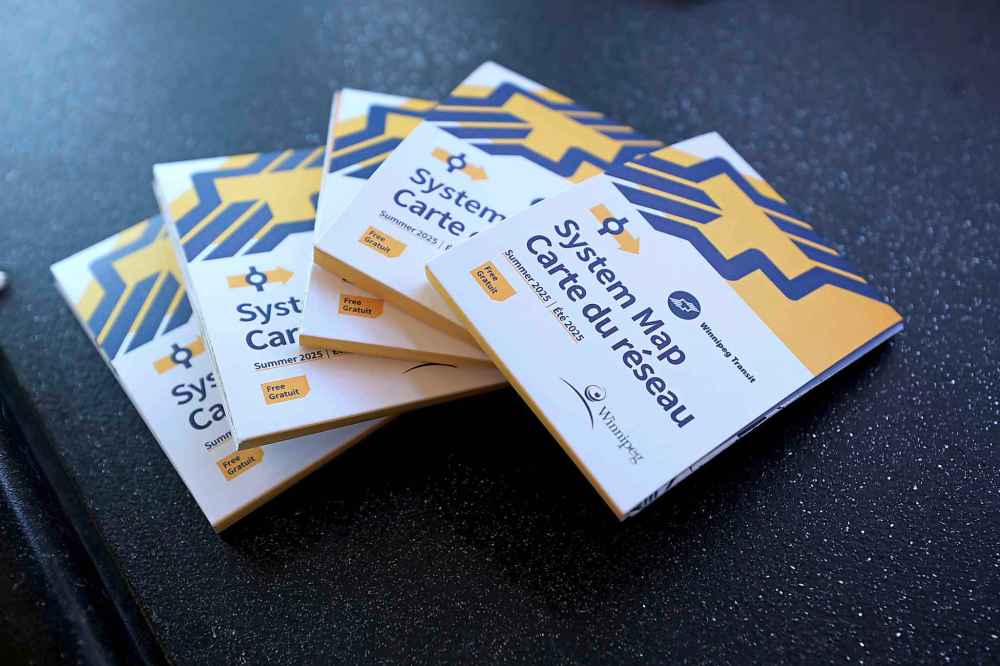
What this about “on-request” transit?
The new transit network has expanded the on-request system to 12 zones in the city (areas shaded in yellow on the system map):
- Charleswood
- Meadows North
- North East
- North West
- Riverview/Fort Garry
- Sage Creek/Windsor Park
- St. Boniface
- St. Boniface Industrial Park
- South St. Vital
- Waverley West
- Westwood/Murray Park
- Whyte Ridge/West Fort Garry
In these areas, when feeder bus routes are not in service, would-be ridersmust hail a bus using the on-request system.
The schedule of on-request hours of operation for each zone is available on the city’s website; generally speaking on-request operates on evenings and weekends.
Rides can be booked using the Winnipeg Transit+ On-Request app (Here for Apple devices, here for Android), or booked on the city’s website, or by calling 311 and following teh prompts for booking on-request transit.
After requesting a ride, passengers receive directions on where to meet the bus, which may be an existing bus stop or an unmarked “virtual stop.”
Winnipeg Transit expects wait times to be between 10 and 20 minutes for on-request rides. If you use the Winnipeg Transit+ On-Request app, you can track your bus in real time.
What if I have a problem?
If want to report an issue or request an enhancement to a bus stop, you can complete this form on the City of Winnipeg’s website.
History
Updated on Monday, June 30, 2025 6:25 PM CDT: Updates tense, adds section on on-request rides.

